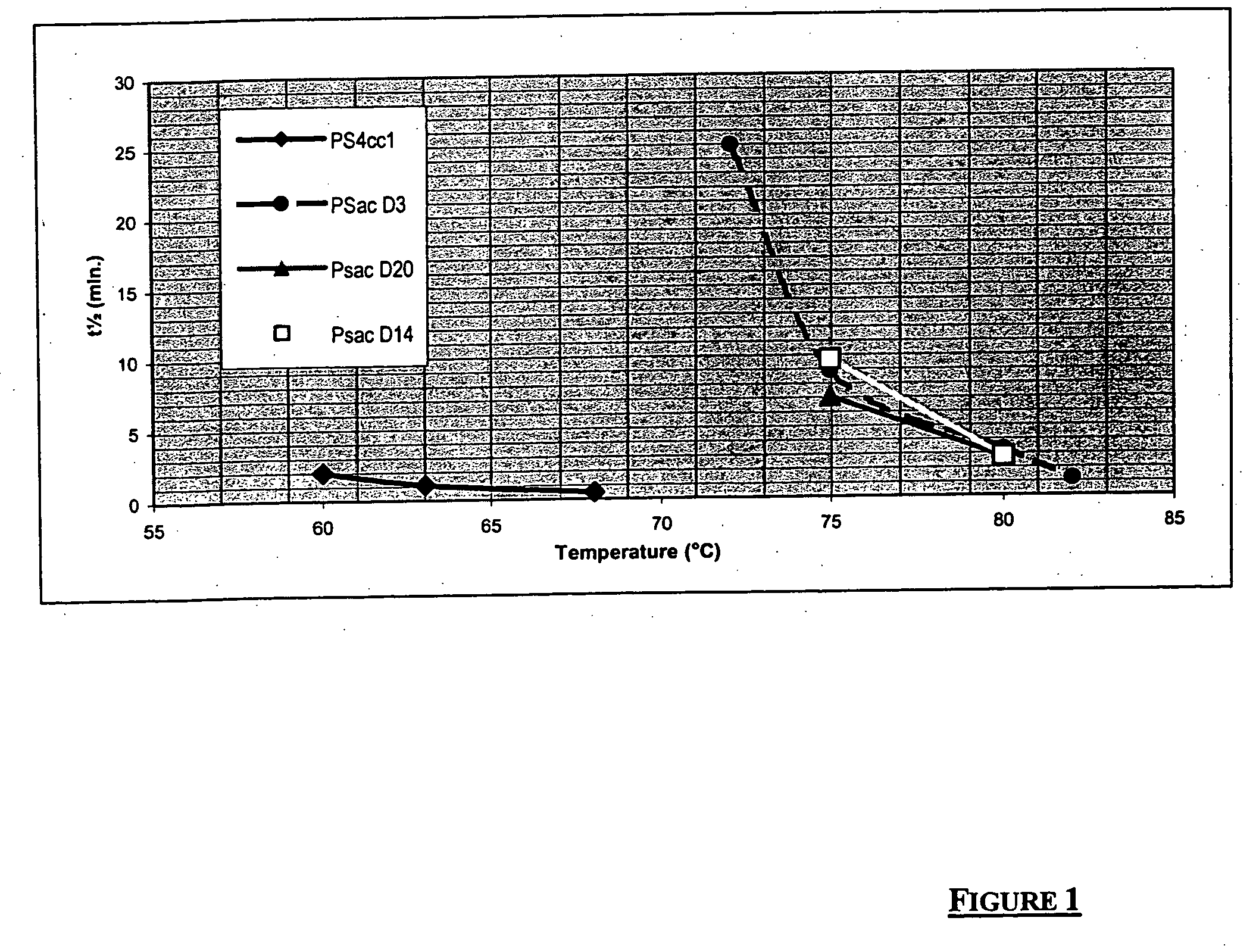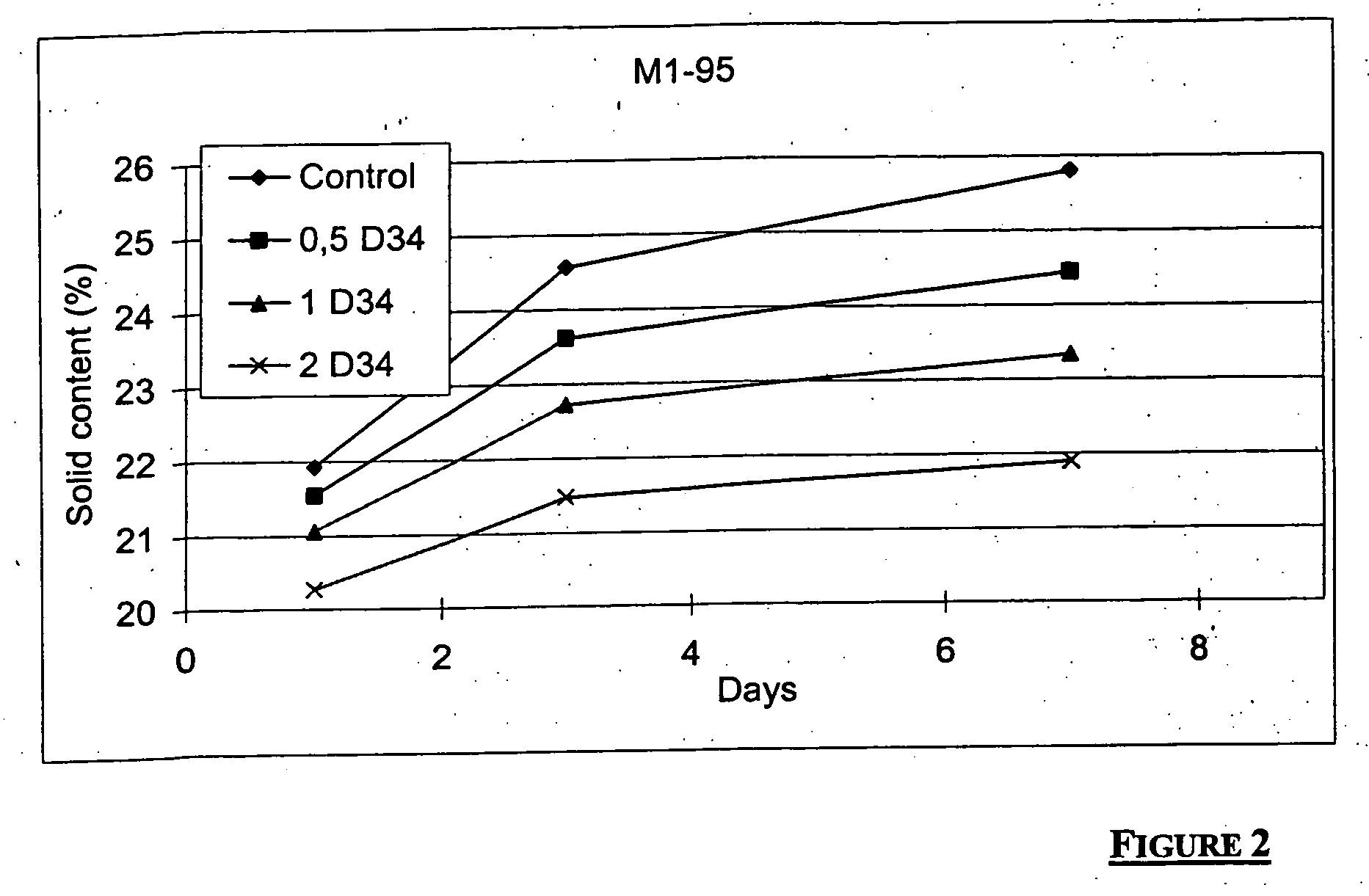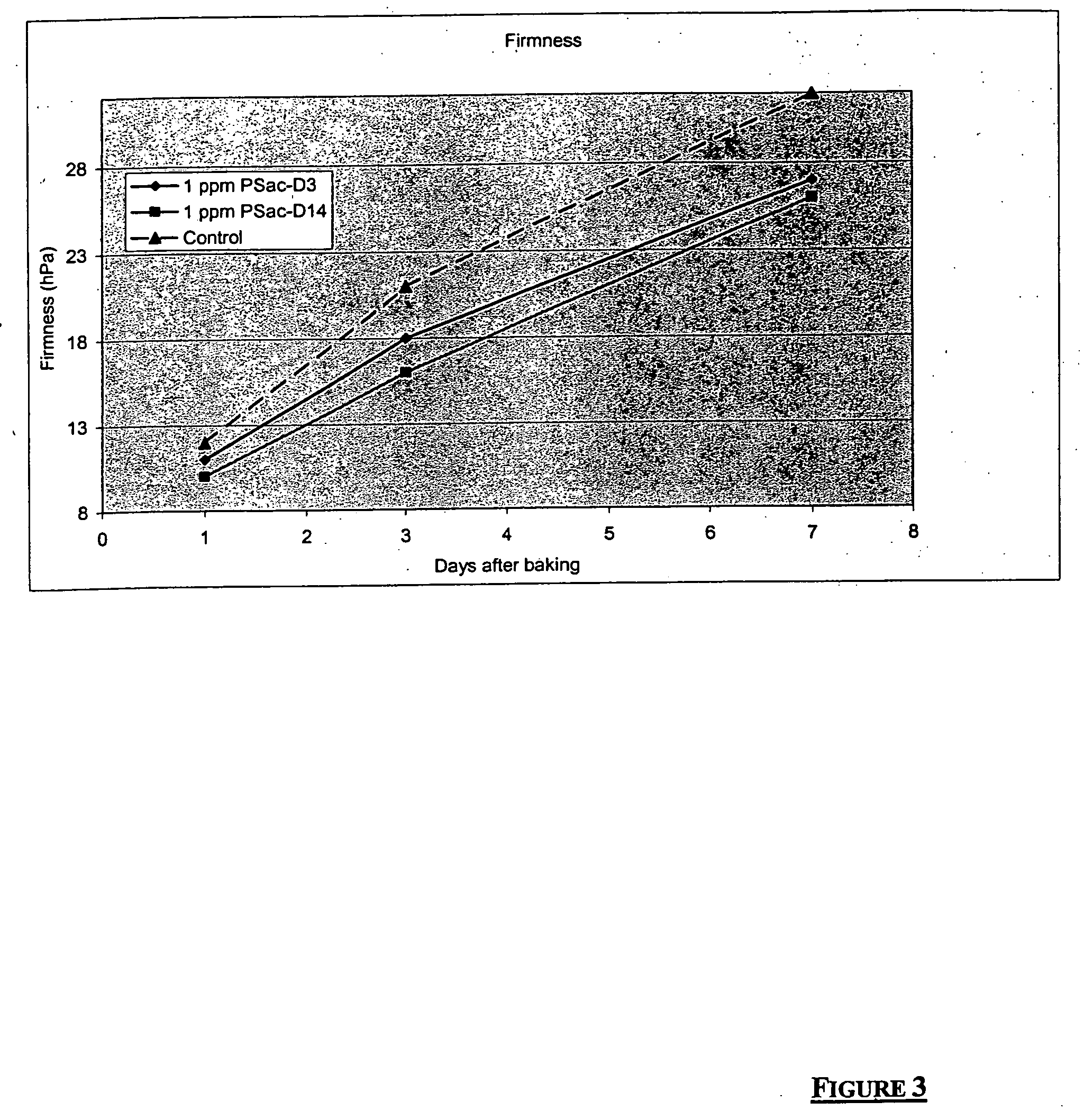Exo-specific amylase polypeptides, nucleic acids encoding those polypeptides and uses thereof
a technology of amylase and polypeptide, which is applied in the field of amylase polypeptides and nucleic acids encoding the polypeptides, can solve the problems of increasing bread firmness, affecting the activity of the enzyme, and affecting the stability of the enzyme, so as to improve the activity, the activity is higher, and the stability of the ph stability
- Summary
- Abstract
- Description
- Claims
- Application Information
AI Technical Summary
Benefits of technology
Problems solved by technology
Method used
Image
Examples
example 1
Cloning of PS4
[0428]Pseudomonas saccharophila is grown overnight on LB media and chromosomal DNA is isolated by standard methods (Sambrook J, 1989). A 2190 bp fragment containing 5 the PS4 open reading frame (Zhou et al., 1989) is amplified from P. saccharophila chromosomal DNA by PCR using the primers P1 and P2 (see Table 3). The resulting fragment is used as a template in a nested PCR with primers P3 and P4, amplifying the openreading frame of PS4 without its signal sequence and introducing a NcoI site at the 5′ end of the gene and a BamHI site at the 3′ end. Together with the NcoI site a codon for a N-terminal Methionine is introduced, allowing for intracellular expression of PS4. The 1605 bp fragment is cloned into pCRBLUNT TOPO (Invitrogen) and the integrity of the construct analysed by sequencing. The E.coli Bacillus shuttle vector pDP66K (Penninga et al., 1996) is modified to allow for expression of the PS4 under control of the P32 promoter and the ctgase signal sequence. Th...
example 2
Site Directed Mutagenesis of PS4
[0430] Mutations are introduced into the mta gene by 2 methods. Either by a 2 step PCR based method, or by a Quick Exchange method (QE). For convenience the mta gene is split up in 3 parts; a PvuI-FspI fragment, a FspI-PstI fragment and a PstI-AspI fragment, further on referred to as fragment 1, 2 and 3 respectively.
[0431] In the 2 step PCR based method, mutations are introduced using Pfu DNA polymerase (Stratagene). A first PCR is carried out with a mutagenesis primer (Table 4) for the coding strand plus a primer downstream on the lower strand (either 2R or 3R Table 3).
[0432] The reaction product is used as a primer in a second PCR together with a primer upstream on the coding strand. The product of the last reaction is cloned into pCRBLUNT topo (Invitrogen) and after sequencing the fragment is exchanged with the corresponding fragment in pCSmta.
[0433] Using the Quick Exchange method (Stratagene), mutations are introduced using two complementary ...
example 3
Multi SDM
The PS4 variants were generated using a QuickChange® Multi Site Directed Mutagenesis Kit (Stratagene) according to the manufactures protocol with some modifications as described.
Step 1: Mutant Strand Synthesis Reaction (PCR)
[0437] Inoculate 3 ml. LB (22 g / l Lennox L Broth Base, Sigma)+antibiotics (0,05 μg / ml kanamycin, Sigma) in a 10 ml Falcon tube [0438] Incubate o / n 37° C., ca. 200 rpm. [0439] Spin down the cells by centrifugation (5000 rpm / 5 min) [0440] Poor off the medium [0441] Prepare ds-DNA template using QIAGEN Plasmid Mini Purification Protocol
[0442] 1. The mutant strand synthesis reaction for thermal cycling was prepared as follow:
PCR Mix:2.5μl10X QuickChange ® Multi reaction buffer0.75μlQuickSolutionXμlPrimers (primer length 28–35 bp->10 pmolprimer length 24–27 bp->7 pmolprimer length 20–23 bp->5 pmol)1∥ldNTP mixXμlds-DNA template (200 ng)1μlQuickChange ® Multi enzyme blend (2.5 U / μl)(PfuTurbo ® DNA polymerase)XμldH2O ...
PUM
| Property | Measurement | Unit |
|---|---|---|
| temperatures | aaaaa | aaaaa |
| temperature | aaaaa | aaaaa |
| temperatures | aaaaa | aaaaa |
Abstract
Description
Claims
Application Information
 Login to View More
Login to View More - R&D
- Intellectual Property
- Life Sciences
- Materials
- Tech Scout
- Unparalleled Data Quality
- Higher Quality Content
- 60% Fewer Hallucinations
Browse by: Latest US Patents, China's latest patents, Technical Efficacy Thesaurus, Application Domain, Technology Topic, Popular Technical Reports.
© 2025 PatSnap. All rights reserved.Legal|Privacy policy|Modern Slavery Act Transparency Statement|Sitemap|About US| Contact US: help@patsnap.com



